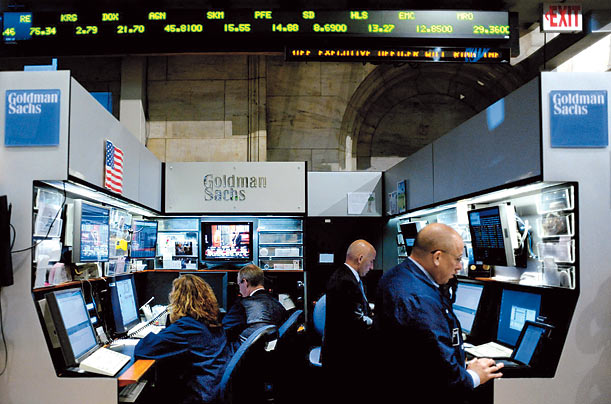
In the 91 days from March 28 through June 26 — ending its financial quarters on the last day of the month, as most other companies do, would be too pedestrian — Goldman Sachs made more than $3.4 billion. That staggering profit — $1.6 million per hour, $117,000 per employee — is the most the firm has ever earned in a quarter. After Goldman reported the news on July 14, everyone from Wall Street to Wasilla struggled with a basic question: Should we be happy about this or not?
The case for happy is that a mere nine months after the U.S. and Europe teetered on the brink of financial collapse, one of the stalwarts of the global financial system appears to have returned to robust health. Goldman has paid back, with interest, the $10 billion that taxpayers gave it in October. It's making bets and taking risks again (most of the profits came from Goldman's trading operations), which is what capitalism is about. "Is there a law in the United States that you can't make profits?" Democrat Paul Kanjorski, a senior member of the House Financial Services Committee, asked the day of the earnings report.
There isn't. But the mere fact that reporters raised the subject was an indication that the issue is complicated. Goldman's profits are so high because so many of its competitors are wounded or defunct. Though the firm is in this advantageous position because it did a better job of steering through the crisis than did most rivals (JPMorgan Chase is Wall Street's other beacon of health), it probably wouldn't have survived the worst of the panic last fall if there hadn't been a massive government bailout — engineered by a Treasury Secretary who used to be Goldman's chief executive.
In the end, this has turned out to be a pretty great financial crisis for Goldman Sachs — and for its employees, who will earn, on average, almost $1 million each for the year if the profit pace keeps up. It hasn't been a great financial crisis for the U.S., and the juxtaposition is bound to grate.